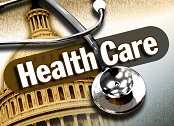 Here is a great piece on my former student, Jessica Harris, who now works in health care price transparency at Aetna. She visited my class this summer, and here are some of the things she taught them:
Here is a great piece on my former student, Jessica Harris, who now works in health care price transparency at Aetna. She visited my class this summer, and here are some of the things she taught them:
The evolution of transparency in the industry: “2013 and 2014 have been really important years for transparency and for discussion on this issue. There were many articles in the mainstream press that discussed all sides of this issue. You also saw where some states have mandated transparency and have actually created websites to show transparency. You also have some advocacy organizations — like the Catalyst for Payment Reform — that represent big companies and released a report card for state transparency laws for the first time in 2013.
And then you also saw some big events happening in federal policy. In March, the Centers for Medicare and Medicaid Services released an in-patient data set for the very first time, and then in June they released an out-patient data set for the very first time, showing payment data for individual procedures. That was a big deal. It created a lot of interest from organizations like the Robert Wood Johnson Foundation encouraging start-ups to really innovate around this data and figure out how to show it to consumers.”
Barriers to transparency: “Negotiated prices are historically considered trade secrets. Many hospitals or health systems have something called gag clauses where it forbids the payer to disclose the prices they negotiated. Actually a study came out in 2013 showing that only 16 percent of hospitals that were asked the price of a traditional hip replacement were able to give a price. And of those prices, they varied significantly.”
Trends in employer sponsored plans: “There are two trends happening for employer sponsored insurance.
First of all, you’re seeing increased cost sharing. So 38 percent of employees face an annual deductible of over $1,000 per person, in plans that the industry calls “high deductible health plans”. So in 2012, only 13 percent of employers were considering offering only high deductible options. But in 2014, 44 percent were considering offering only high deductible plans. A high deductible model means you have to pay a certain amount before the health insurance even kicks in in terms of cost sharing. So you have to pay a certain amount before you even start paying a co-pay or a percentage of the service you are using.
‘Consumerism’ and out-of-pocket spending continues to increase: despite seeing health care spending go down overall and costs start to stabilize a little bit, we saw an increase in out-of-pocket spending; it was up by 4.8 percent in 2012 to $768 per person.”
The impact of exchanges: “You are seeing a shift from a more traditional, almost like a pension model, to something more similar to a 401k model. Again when we think about health care consumerism, you see more responsibility but also more choice falling on the employee, but it also means the company isn’t defining the health care as much. They are saying go out on exchanges, we’ll give you a voucher, purchase your health care, but it is on you to decide if you’re purchasing a good plan for you and your family.
We’ve heard about the public health insurance exchanges for the uninsured, but there are actually several private health insurance exchanges that have cropped up, creating marketplaces for all those benefits you might traditionally get from your employer and having employees go out and be able to shop on the exchange to be able to get the care that they need.
It’s a really big disruptive force that we’re going to see in the next couple of years. According to one study, by 2017, nearly one in five Americans may buy benefits from an exchange. To put that in perspective, the public exchanges serve nearly 30 million uninsured. The private exchanges are going to rapidly change insurance purchasing for about 150 million people with employer sponsored insurance.”
